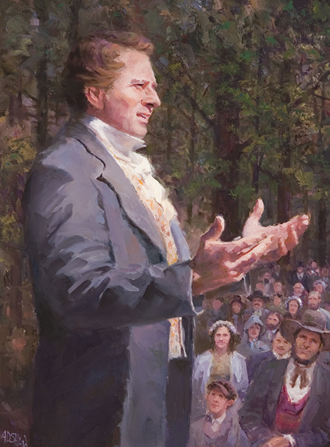 One reason
the New Testament Church fell into apostasy was because it was overcome
by false Greek philosophy. Today, The Church of Jesus Christ of Latter-day
Saints is under attack by many different philosophies, but they all pretty much
boil down to the same kind of thinking: there is no God, no right and wrong, no
sin or evil or righteousness, and whatever a person wants to do is just fine.
Or, if there is a god, he/she/it is remade in the image of men/women, and not
men made in the image of God. In other words, God becomes what each person
wants him to be for their own purposes. This is why there are so many different
churches today; one for whatever set of doctrines suites a particular group. (And
we haven’t even mentioned the unrelenting and vigorous Satanic attack on
religious freedom throughout the United States and the world.)
One reason
the New Testament Church fell into apostasy was because it was overcome
by false Greek philosophy. Today, The Church of Jesus Christ of Latter-day
Saints is under attack by many different philosophies, but they all pretty much
boil down to the same kind of thinking: there is no God, no right and wrong, no
sin or evil or righteousness, and whatever a person wants to do is just fine.
Or, if there is a god, he/she/it is remade in the image of men/women, and not
men made in the image of God. In other words, God becomes what each person
wants him to be for their own purposes. This is why there are so many different
churches today; one for whatever set of doctrines suites a particular group. (And
we haven’t even mentioned the unrelenting and vigorous Satanic attack on
religious freedom throughout the United States and the world.)
With the restored Church of Jesus
Christ, there is constant pressure from inside and outside to follow suit, to
change the doctrines and reinterpret the scriptures to accommodate the vain philosophies
of men. Mingling a little scripture with these modern philosophies/societal
norms is an old game of the Adversary (who has pulled it off repeatedly in the
past; hence the need for new dispensations). Therefore, whether it be gay/lesbian
lifestyles/marriage, ordaining
women/extreme feminism, promoting
doubt of God as good, revising
the narrative of the apostasy and restoration, or feuding with feds, it’s
all man/woman-made philosophies. Whatever gets or keeps people out of the
Church, or if not that, out of the temple, gives the devil a victory.
Instead, we should follow the
prophets and apostles in their teaching the scriptures, so “that ye may not be
seduced by evil spirits, or doctrines of devils, or the commandments of men;
for some are of men, and others of devils” (D&C 46:7).
From Determining Doctrine:








